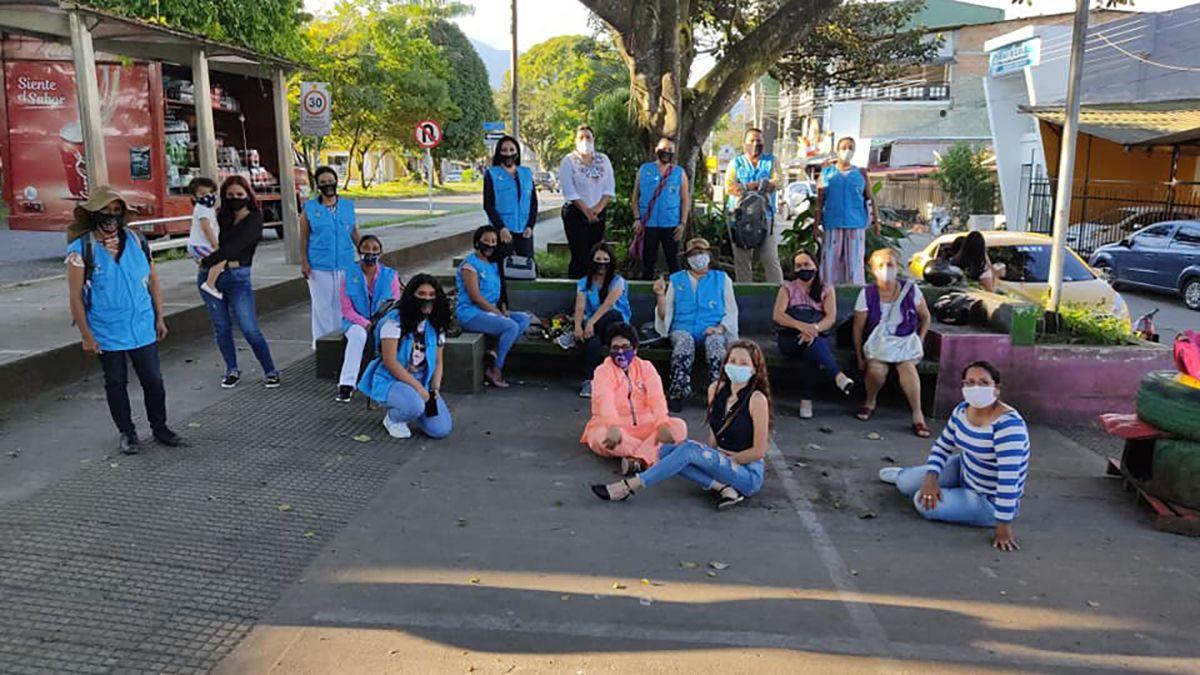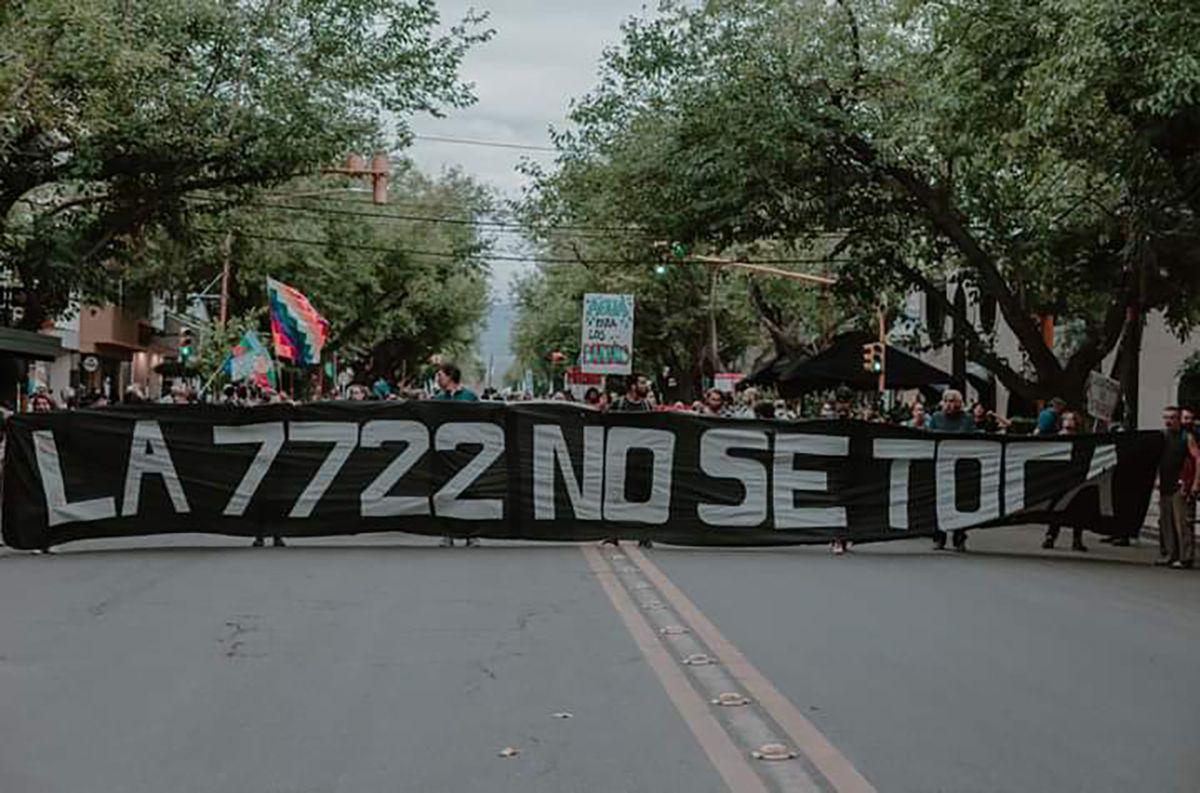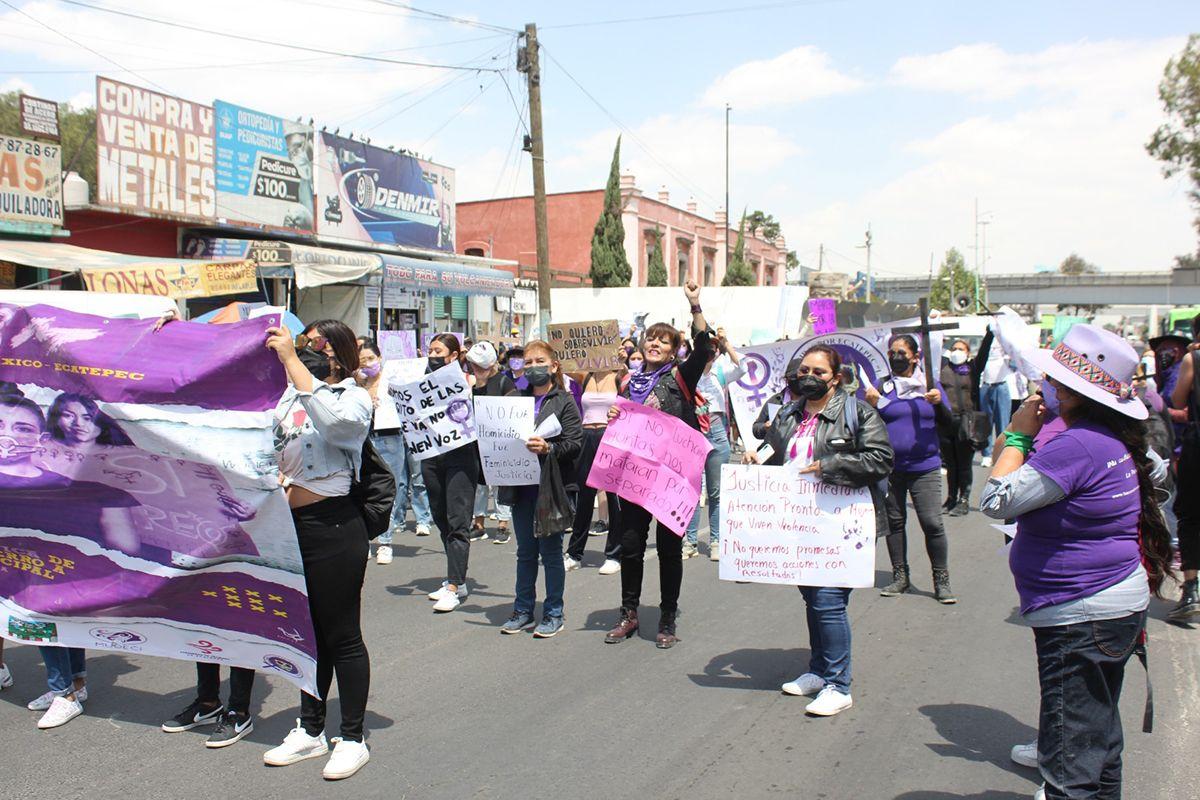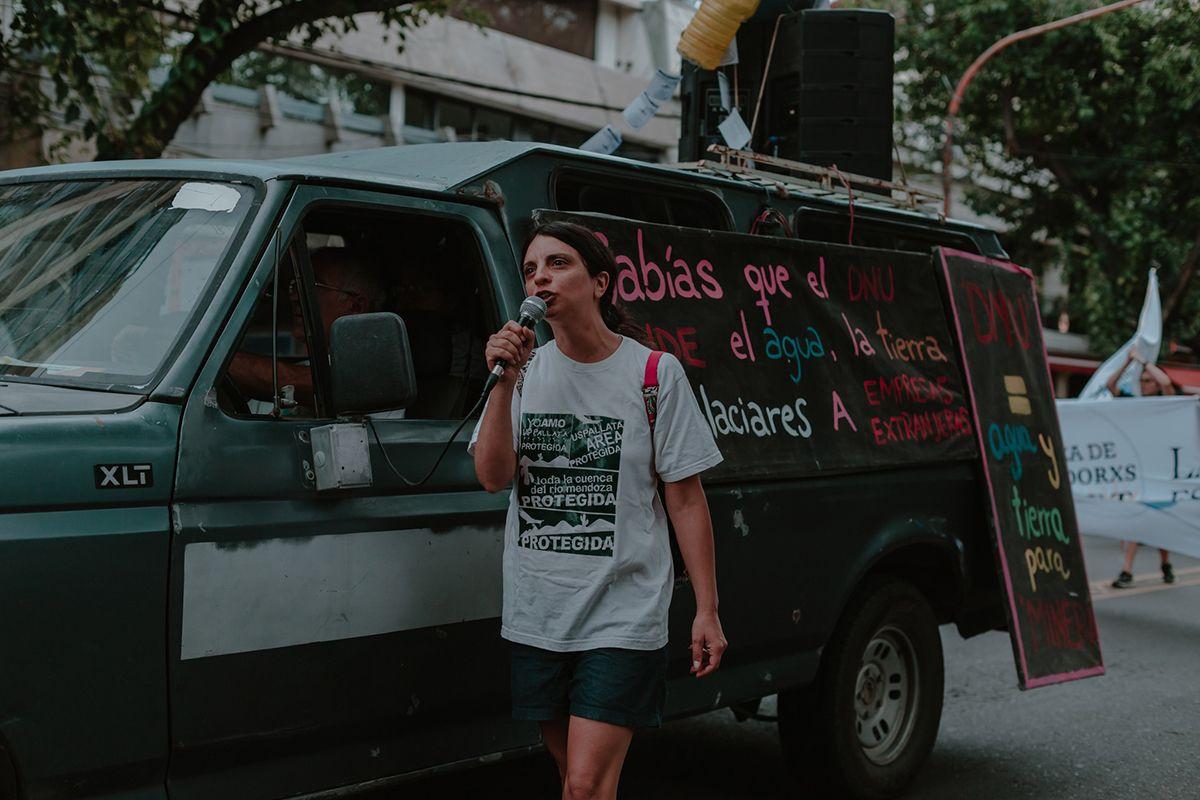A wound that cannot be disinfected because the water only arrives in pipes. A river contaminated by the years of activity of a mining project. A colony without supplies next to a commercial tower that never suffered losses. From Mexico to Argentina, access to water has increasing obstacles.
But when water is scarce, the main people in charge of seeking solutions are women. The fight for water resources is led by women defenders despite the fact that, according to Global Witness, they are more vulnerable to violence such as threats, harassment, harassment and stigmatization.
Although mining, logging and agro-industry are the most aggressive sectors for environmental defenders, the fight for water is not far behind. Across Latin America, women have both dangers and achievements to tell.
Colombia, against shortages and invisibility
It was the night of March 31, 2017. A stormy rain in the city of Mocoa, the capital of Putumayo, lasted until it overflowed the rivers and turned into an avalanche. Water and land destroyed 17 neighborhoods, of which five were completely destroyed. The result, according to official figures, was 330 people killed, 400 injured and hundreds of victims.
The women were responsible for the transfers to the shelters. Later they participated to get food and take care of children and the sick. A silent work that they had done all their lives, but which became visible with the so-called “Mocoa tragedy”.
“People began to talk about how climate change and environmental conditions also affect and increase the burden on women who have historically been in the role of caregivers. Many communities don't have access to water, so it's women who do the laundry, the ones who cook and the ones who see how to carry water from very distant areas. An overload of work that is invisible,” says Laura Juliana Silva Castillo, a member of the collective La In.
The organization of the inhabitants of Mocoa became the Guardians of the Water, a network of more than 100 women from 13 municipalities in Putumayo. The initiative is promoted by the association “Weavers of Life” and the objective is to defend water in the face of shortages.
While rains are part of the region, the drinking water that should come through the hydraulic network is not enough. Seven years after that avalanche, the reconstruction of the aqueduct that provides permanent service has not yet been achieved, despite the investment of 25 billion Colombian pesos since 2018, according to the Colombian Ombudsman's Office.
“The money was invested in the same water source collection of the Mulato River, which is located in an area of frequent material landslides that causes serious damage to built infrastructure in winter,” the agency said.
As community measures, community viaducts have been built, but they are still not sufficient to improve management.
“There is not enough water supply for daily activities and, in addition, in the long run they have also greatly affected people's health. For example, there are problems with fungi, rashes, stomach diseases, vaginal infections have occurred a lot in women, so it has been very complicated,” says Silva.
The Water Guardians have been trained in environmental defense, social participation, advocacy and project formulation. They also hold days for river cleaning, reforestation and awareness raising. Currently, they are promoting a three-year action plan that ranges from strengthening as an organization to proposing alternatives to improve water management. They even hope to participate in international meetings such as the United Nations Conference on Biological Diversity (COP16) to be held this year in Colombia.
Laura Silva believes that having spaces to be visible has been an important step forward. As water defenders, they have faced obstacles in reaching out to dialogue with authorities. Added to this is an environment of risk for their security due to persecution of environmental leaders and the presence of armed groups.
“Sometimes the State doesn't take the role of women in caring for water seriously and there is also a lot of stigmatization. When we do some management, they have told us that 'he's coming to annoy', 'he's coming to ask for something', so it's complicated because the solutions or guarantees are not provided to be able to play an advocacy role in a better way,” says the water guardian.
However, there have also been victories that keep them firm. The main one is to see changes in habits in water management and the opening up of the communities to which they belong to to demand better living conditions.

Argentina, against extractivism
In western Argentina, in the province of Mendoza, history is marked by water scarcity. Its inhabitants grow up knowing that the resource is scarce, that it has to be managed and that it may not last forever. A problem attributed to its arid climate with little rainfall, but which for the last 20 years has been under pressure from a giant: mining.
The first resistance to mining projects occurred in 2003, in the city of San Carlos. The opposition arose out of concern about the documented impacts of the activity, such as water consumption and the contamination of toxic substances such as cyanide, sulfuric acid, lead, arsenic, and others.
The problem is that in the midst of the economic crisis facing the country, mining and fracking projects (for the extraction of hydrocarbons) are offered as an alternative.
“(Mining companies) are presented as important social events and are therefore generating ruptures in the territories. People are aware of the importance of water, but they also need work and they need to eat,” explains María Marengo, historian and member of the Maipucina Assembly for Water.
The Maipucina Assembly is part of the Mendoza Assemblies for Pure Water (AMPAP), a space that since 2007 brings together various fronts that work in the defense of water. Together, they promoted and defended Law 7722 to prohibit the use of toxic substances in mining.
Its members, mostly women, define the AMPAP as “the assembly of assemblies” without partisan or institutional purposes. One of its most popular moments was in 2019, when one of the largest marches in Mendoza took place, with an estimated attendance of 50,000 people, to demand that the proposed amendments to Law 7722, which sought to enable the use of toxic substances, be vetoed.
This is despite the fact that medical institutions such as the Argentine Society of Pediatrics have reported that elements such as mercury or lead can cause cardiovascular and/or respiratory diseases. In addition to recognizing the effects on ecosystems.
“You are defending life, your territory, your place, the way of life you want to have. We argue that Mendoza has already chosen its mode of production, which is not mega-mining, not extractivism. We propose other models of life that we want to follow,” highlights Elsa Díaz, environmental defender and member of the AMPAP.
However, in the face of defense, there is a threat. The members of the AMPAP have experienced criminalization, arbitrary arrests during protests, extortion and loss of jobs or spaces to influence.
“We have territorial work in the communities and at first we could attend schools and give talks because many of us are teachers, but in recent years the doors have been closed to us in schools. There are certain strategies that the government made so that we could not disseminate information while they were doing all the discussion in the mainstream media,” explains Karina Castañar, member of the Tupungato Assembly for Pure Water.
However, the work does not stop. For the women of the AMPAP, their fight is part of a larger link for the defense of water.
“We're very smart, too, that's the reality. We do it because we believe in what we do and we also know that we are building a memory of water, a socio-environmental struggle that other people are going to go through... and that will never be taken away from us”, concludes Elsa Díaz.

Mexico, against megaprojects and political recruitment
In Ecatepec, the second most populated municipality in Mexico, there are colonies up to 30 years old without access to water. The supply is maintained with pipes that arrive only for those who can afford them. The rest of the population keeps collecting from other areas or capturing rain.
In June of last year, Elsa Arroyo and a group of neighbors who live in Ecatepec met to take Avenida Central, one of the main roads in the municipality that connects with Mexico City. The blockade continued for 22 hours until the police arrived to evict them.
The next day, Elsa's face appeared in several Facebook newsgroups accusing her of being an extortionist and downplaying the water problem. Threats and violent messages also arrived that led her to file a complaint with the Cyber Police. But even in the face of fear, women from Ecatepec formed the Committee of Women Water Defenders, backed by the association Women, Democracy and Citizenship (Mudeci).
“Our motto is 'Water through the network for Ecatepec' because people no longer want pipes, what they want is water that comes directly from the tap,” explains Elsa.
Currently, they are in the process of organizing to hold meetings with authorities and other advocacy activities that allow them to achieve solutions. The main demands are to stop political capture and privatization, since the defenders claim that water exists - and pipes have been seen to be collected from wells - but there is no distribution.
“When we talk about the political capture of water, we refer to the fact that there are actors involved that condition the distribution of water. If you are a member of his political group, they will do everything possible to send you water and will ask you to vote for him in the end. And when we talk about privatization, it's because it's more profitable to sell pipes so that the water reaches you through the (hydraulic) network,” Arroyo points out.
In central Mexico, women from Ecatepec are not the only ones mobilizing for an equitable water supply. A few kilometers to the south, in the country's capital, in the municipalities of Coyoacán, Tlalpan and Xochimilco, there are also defense groups.
“Where I live it has always been a constant that there is no water. It's been a daily occurrence since I was little and that didn't make me aware of the forms of discrimination in the distribution of water until I approached women defenders of the territory,” Natalia recalls.
Natalia's involvement led to her being one of the founders of the Women's Community Action Cooperative, where she works with popular colonies and indigenous peoples. One of its lines of action is the analysis of water concessions granted to mega-real estate projects in Mexico City, such as the Mítikah tower that caused the displacement of the town of Xoco or the expansion of the Azteca Stadium.
At the end of last year, the mobilizations in the south of Mexico City, where Natalia participated, managed to stop the Congress's General Development Plan (PGD) and General Territorial Planning Program (PGOT) projects, with which it was proposed to use conservation land for buildings.
There is currently a question as to what could happen in this election year. “We feel a kind of gain from the imposition of a paper legal program, but we feel uncertain about what will happen now, if we are going to continue developing these megaprojects or not,” Lara says.
However, both Natalia and Elsa believe that we should not let our guard down. The defense carried out by women is urgent in the face of the shortage and the measures taken by the authorities to remedy them.
“Water is essential for the activities carried out by women, which is why we have always been linked to management in our communities and will continue to be so,” says Elsa.




Comentarios (0)